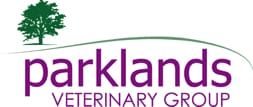
MENUMENU
- Home
- Videos and images
- About Us
- Employment
- Small Animal
- Farm
-
- Equine
- Poultry
- Pigs
- Breeding
- Aughnacloy
- Drumahoe
- Cookstown
- Portglenone
Mobility Scoring
Lameness remains a major problem in the UK dairy herd with an average case costing approximately £180 (DairyCo, 2011). It has become a hot topic due to the impact it has on the consumer’s image of the dairy industry and this is increasingly reflected in the milk buyer’s attitudes to lameness on farm. With mobility scoring now a requirement of many contracts some producers will be required to score their herd every 3 months and record these details. Lameness has a massive clinical impact on health and production performance on the farm and is generally underestimated.
How can we help?
Depending on what works best for you, we can; undertake all of your mobility scoring for you, provide training for you to do the scoring yourself or a combination of the two. We are also best placed to offer advice based on the outcome of your scoring. All foot trimming and mobility scoring is recorded on our central data management system (Vet impress) so that herd and cow mobility performance can be measured. All our Farm vets are highly trained in foot trimming and deal with a large case load every year. With their experience in not only treating the individual case but advice and management of nutrition, environment and other herd and farm processes which impact foot health, we are in a unique position to manage any herd lameness and mobility issue.
Healthy feet
On the back of mobility scoring comes the DairyCo Healthy Feet Programme which is designed to help dairy farmers reduce levels of lameness on farm through improved management of cows and people. It follows a step by step approach to help you devise a ‘lameness map’ – a simple visual representation of the relative incidences of the most common lesions causing lameness. An on-farm risk assessment will then be carried out by a mobility mentor, with solutions being discussed and an action plan agreed upon.
An action plan in itself will not reduce lameness. Quarterly mobility scoring will be required to measure progress and the information from this can then be used to update the farm’s lameness map. Regular on-farm review with the mobility mentor will ensure the action plan remains appropriate and monitor implementation.